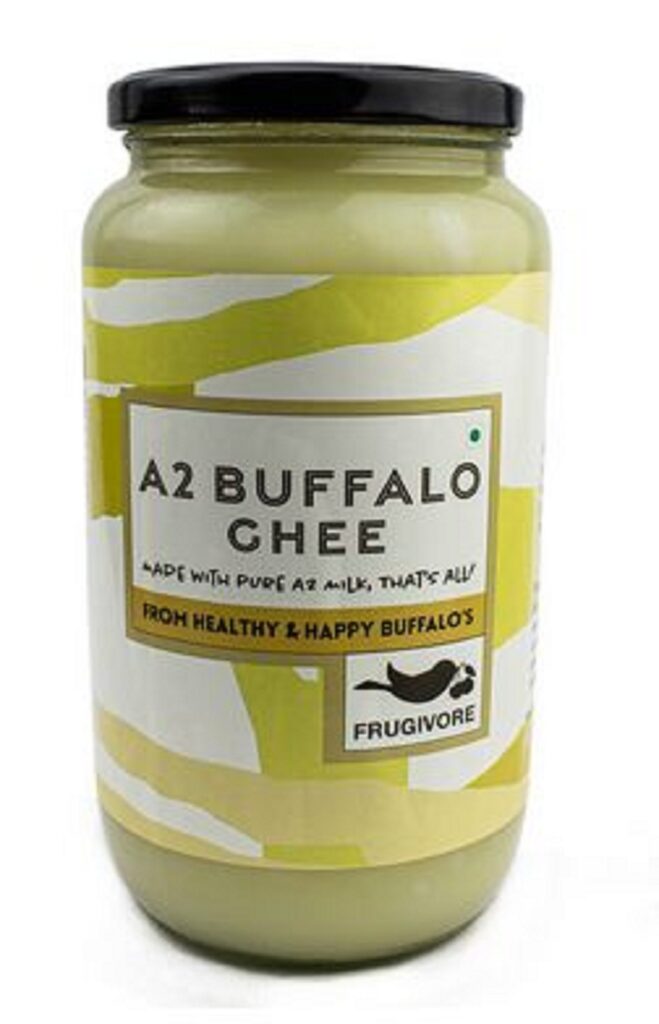Introduction

Buffalo ghee is a type of clarified butter made from the milk of buffaloes. Like traditional ghee, buffalo ghee is produced by simmering butter to remove water content and separate the milk solids, leaving behind a golden, pure fat.
Buffalo milk has a higher fat content compared to cow’s milk, and as a result, buffalo ghee tends to have a richer flavor and a slightly different nutritional profile. It is commonly used in Indian cuisine and is valued for its distinct taste and aroma.
Ghee, in general, is known for its high smoke point, making it suitable for cooking at higher temperatures. It is also appreciated for its potential health benefits, such as providing healthy fats and being free from lactose and casein, which are often removed during the clarification process.
Buffalo ghee is often used in traditional Indian cooking, adding a rich and distinct flavor to various dishes. Keep in mind that the specific details of the process may vary slightly depending on regional variations and individual preferences.
How To make Buffalo Ghee..??
The process of making buffalo ghee is quite similar to making ghee from cow’s milk. Here is a basic outline of the typical Indian buffalo ghee-making process:
Ingredients:
- Buffalo milk
Equipment:
- Heavy-bottomed pan
- Ladle or spoon
- Cheesecloth or muslin cloth
- Airtight container for storage
Procedure:
- Collecting Milk:
- Use fresh buffalo milk. Buffalo milk is known for its higher fat content compared to cow’s milk.
- Boiling:
- Pour the buffalo milk into a heavy-bottomed pan and bring it to a boil over medium heat. Stir occasionally to prevent the milk from sticking to the bottom of the pan.
- Simmering:
- Once the milk has come to a boil, reduce the heat to a simmer. Continue simmering the milk on low to medium heat.
- Formation of Cream:
- As the milk simmers, a layer of cream will form on the surface. Keep stirring gently to prevent the cream from sticking to the pan.
- Cream Collection:
- Collect the cream layer periodically. This cream can be used to make homemade butter or added back to the milk for a richer ghee.
- Butter Formation:
- Continue simmering until the milk solids separate from the liquid fat. This process will result in the formation of butter.
- Separation of Ghee:
- The butter will go through different stages, starting with melting and then separating into liquid fat and milk solids. The milk solids will settle at the bottom, and the clear liquid on top is the ghee.
- Filtering:
- Once the ghee is clear, strain it using a cheesecloth or muslin cloth to remove any remaining milk solids. This will result in a clarified, pure buffalo ghee.
- Cooling:
- Allow the buffalo ghee to cool to room temperature before transferring it to an airtight container for storage.
- Storage:
- Store the buffalo ghee in a cool, dry place. It has a longer shelf life due to the removal of water content and milk solids.

What is A2 Buffalo Ghee

A2 buffalo ghee is made from the milk of buffalo breeds that produce A2 type of beta-casein protein. The A2 milk contains only the A2 type of beta-casein, as opposed to A1 milk, which contains both A1 and A2 types. Some people believe that A2 milk, including buffalo milk, may be easier to digest and less likely to cause certain digestive issues compared to A1 milk.
The process of making A2 buffalo ghee is similar to the general buffalo ghee-making process, as outlined in the previous response. However, the key difference lies in the type of milk used. A2 buffalo ghee is made exclusively from buffalo milk that contains the A2 beta-casein protein.
To ensure that you are using A2 buffalo ghee, you may want to source it from producers or brands that specifically mention the use of A2 milk in their ghee production. These products are often labeled as A2 ghee or A2 buffalo ghee to distinguish them from ghee made with A1 milk.
As with any food product, it’s essential to check the labeling and product information to verify the type of milk used and the specific qualities of the ghee. A2 buffalo ghee is valued by some individuals for its potential digestive benefits and is commonly used in traditional Indian cooking.
Buffalo ghee VS Cow ghee

Buffalo ghee and cow ghee are both types of clarified butter commonly used in Indian cuisine and other culinary traditions. While they share some similarities, there are distinct differences in flavor, composition, and potential health benefits between the two.
1. Flavor and Aroma:
- Buffalo ghee tends to have a stronger, more robust flavor compared to cow ghee. It has a distinctive aroma and a rich, slightly sweet taste.
- Cow ghee has a milder flavor and a lighter aroma in comparison to buffalo ghee. It is often preferred for its subtle and versatile taste.
2. Fat Content:
- Buffalo milk has a higher fat content than cow’s milk, and as a result, buffalo ghee is richer in fat.
- While still high in fat, cow ghee may have a slightly lower fat content compared to buffalo ghee.
3. Nutritional Profile:
- Buffalo ghee is known for its higher levels of fat-soluble vitamins, such as A, D, E, and K, along with minerals like calcium and phosphorus.
- Cow ghee also contains these vitamins and minerals but may have a different concentration.
4. Digestibility:
- Some people claim that A2 milk, often found in buffalo milk, may be easier to digest for individuals who are sensitive to dairy. This is because A2 milk lacks the A1 beta-casein protein found in some cow’s milk, which is believed by some to be associated with certain digestive issues.
5. Culinary Uses:
- Both buffalo ghee and cow ghee are versatile cooking fats with high smoke points, making them suitable for frying, sautéing, and other high-heat cooking methods. They are commonly used in Indian cooking to add flavor and richness to dishes.
6. Availability:
- Cow ghee is more widely available and commonly used in many parts of the world. Buffalo ghee may be more region-specific and can be found in areas where buffalo milk is prevalent.
Ultimately, the choice between buffalo ghee and cow ghee depends on personal preferences, regional availability, and any specific dietary considerations or preferences you may have. Both types of ghee are valued for their unique qualities and can be used in various culinary applications.
Health Benefits of Buffalo Ghee
Buffalo ghee, like other forms of ghee, is considered a source of healthy fats and may offer several potential health benefits. It’s important to note that while ghee can be a part of a balanced diet, moderation is key due to its high caloric content. Here are some potential health benefits associated with buffalo ghee:
- Rich in Healthy Fats:
- Primarily composed of saturated fats, monounsaturated fats, and small amounts of polyunsaturated fats. It serves as a concentrated source of energy and can contribute to overall fat intake.
- Vitamins and Minerals:
- It contains fat-soluble vitamins such as A, D, E, and K. These vitamins play crucial roles in various bodily functions, including immune system support, bone health, and antioxidant protection.
- No Lactose or Casein:
- The clarification process involved in making ghee removes lactose and casein, hence suitable for individuals who are lactose intolerant or sensitive to dairy proteins.
- High Smoke Point:
- It has a high smoke point, making it suitable for cooking at high temperatures without breaking down and producing harmful free radicals. This makes it a good option for frying and sautéing.
- Anti-Inflammatory Properties:
- Ghee, including buffalo ghee, is believed by some to have anti-inflammatory properties. The butyric acid present in ghee is thought to have anti-inflammatory effects that may benefit the digestive system.
- Potential Digestive Benefits:
- Some individuals find that ghee, especially that made from A2 milk, is easier to digest compared to ghee made from A1 milk. The absence of A1 beta-casein protein might make buffalo ghee a more suitable option for those with certain dairy sensitivities.
- Traditional Ayurvedic Uses:
- In Ayurveda, the traditional system of medicine in India, ghee is highly regarded for its therapeutic properties. It is believed to balance doshas (Vata, Pitta, and Kapha) and support overall well-being.
It’s crucial to consume buffalo ghee and other types of ghee in moderation, as they are calorie-dense. Individuals with specific health conditions or concerns should consult with a healthcare professional or a registered dietitian before making significant changes to their diet. Additionally, it’s important to choose high-quality, pure buffalo ghee without additives or preservatives for optimal health benefits.

For more such health benefits of Dairy products please visit Milk and Milk Products and exciting health benefits

